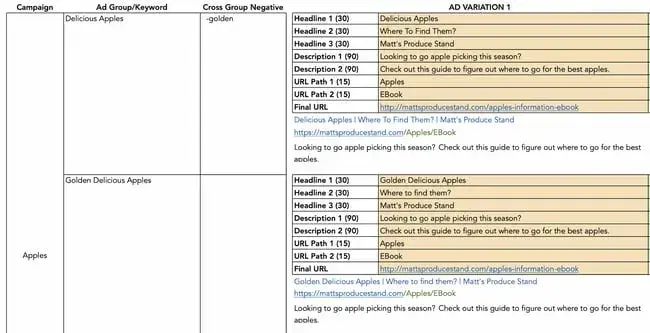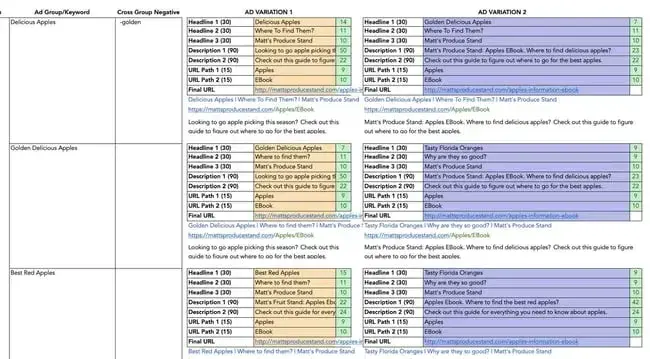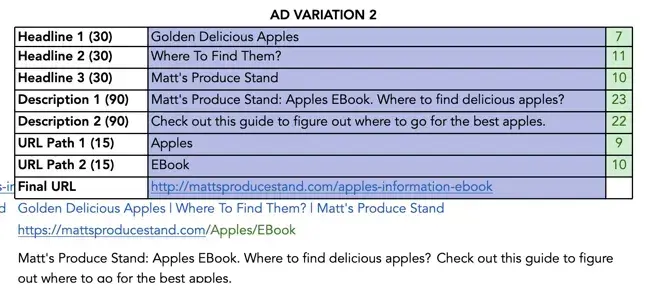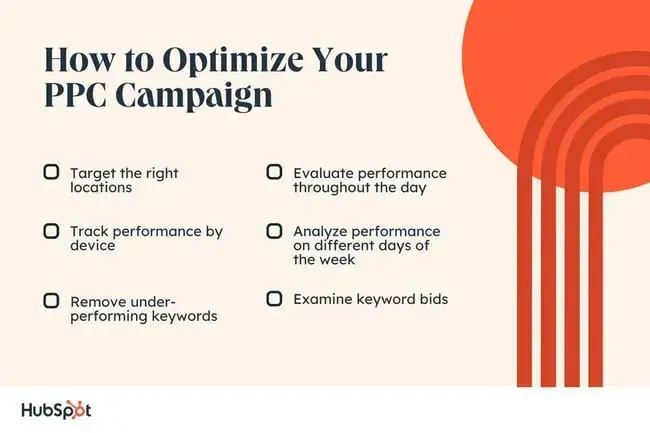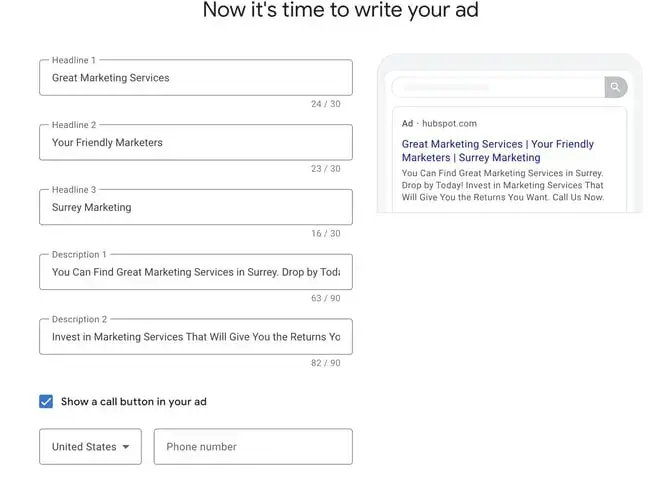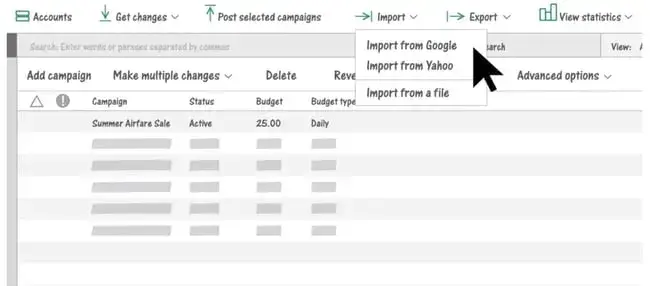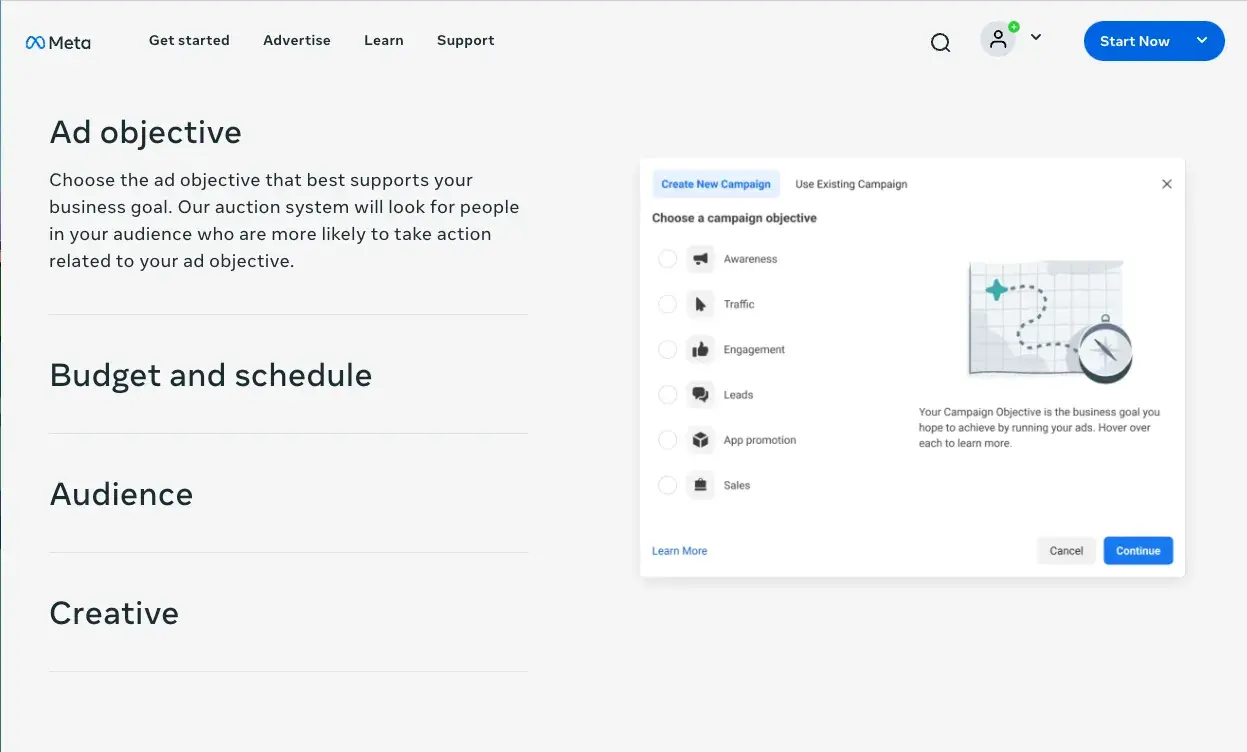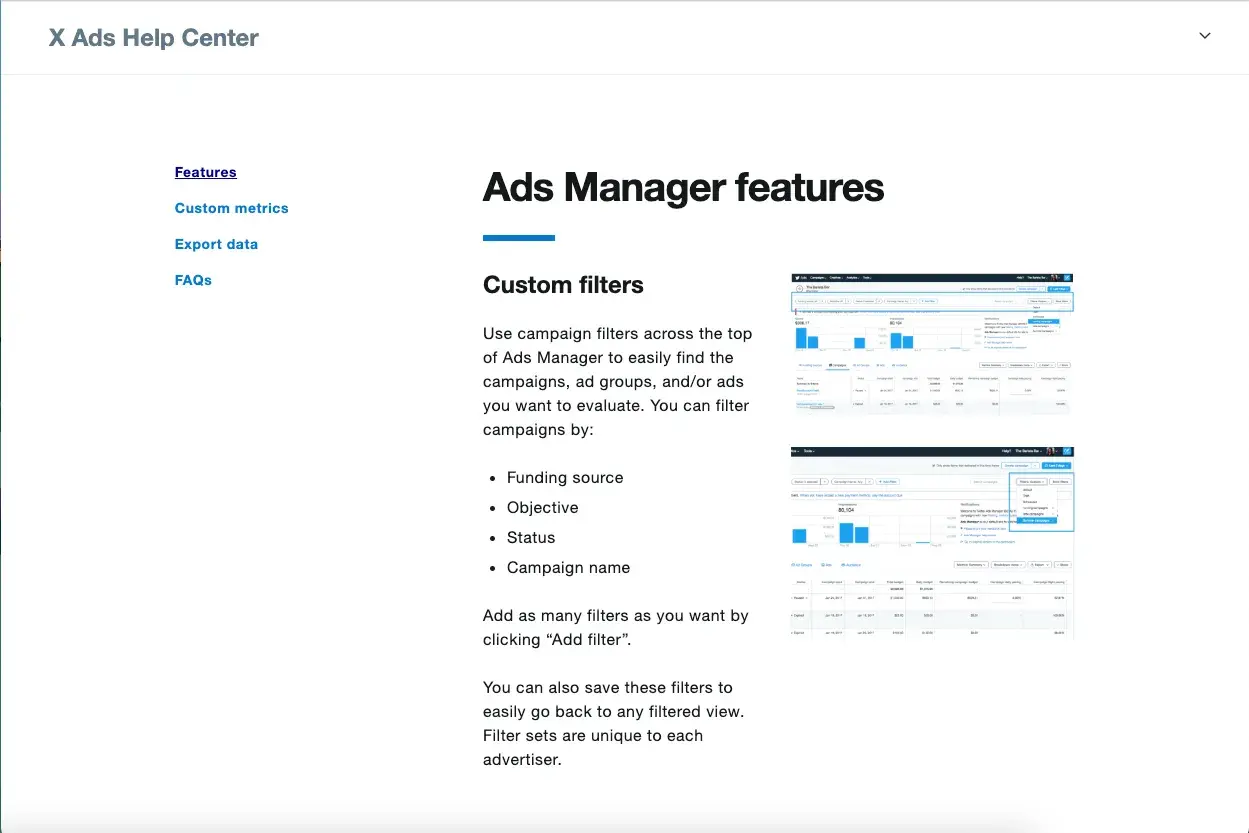When prospects first come to your business page, they probably won’t just click and buy your offering immediately.

In fact, they may have different goals for visiting your page — some might want to learn about you and your products or services, others may be sold on you but aren’t sure what they need from you. Still, others have a different goal in mind.
That means you’ve got to ensure that they can easily find the content they need. I’ve found one of the best ways to make sure you’re getting the right information to the right prospect is by building out a content map.
Content mapping allows you to create highly targeted, personalized content at every stage of the buyer’s journey, helping to nurture leads and prospects toward a purchase decision.
In this post, I’ll show you what a content map is and how you can start content mapping for your brand. Let’s get started.
Table of Contents
For example, if your business is building a brand new website, you’ll have to begin creating a content map based on why the customer is going to your page.
If customers are coming to your website looking for a credible solution worth paying for, they need to establish that you’re trustworthy before making a decision.
At this point, your marketing team begins to map out the kind of content needed to build that trust between the company and the customer.

Image Source
Why is content mapping important?
Content mapping helps you plan for content creation that supports the customer journey and creates a more cohesive, personalized customer experience.
When it comes to content, one size rarely fits all. On the contrary, each piece serves a different purpose.
To ensure that your company's content is effective at generating leads, you need to deliver diversified content that covers different topics that your buyers are searching for at each step of the way.
Content mapping is the process of doing just that.
Let’s say your prospects are visiting your website because they already know you but just need to decide what service to go with. If you don’t have any service comparison content, it may detract them from finishing the process.
That’s not to say that it’s mandatory. Many of my clients don’t have and don’t need this. However, if it’s applicable to your business, you may want to consider this strategy.
Here’s the thing. Coming up with topics for a highly targeted content strategy isn't always easy. However, content mapping with the audience in mind can help you put together a manageable plan that you can actually follow.
How to Create a Content Map
1. Download a content map template.
To help you brainstorm and map out content ideas for targeting specific segments of your audience, check out our free template resource: The Content Marketing Planning Template.

Download Your Free Template Now
The template includes an introduction to content mapping, a crash course on buyer personas and lifecycle stages, a content mapping template (plus examples), a website content map template, and bonus buyer persona templates.
With the template, you'll:
- Learn how to understand buyer personas and lifecycle stages.
- Identify problems and opportunities that your audience needs help with.
- Brainstorm highly targeted content ideas that incorporate personas and lifecycle stages.
2. Identify the buyer persona you want to target.
Buyer personas are fictional, generalized representations of your ideal customers.
They help you understand your customers (and prospective customers) better and make it easier for you to tailor content to the specific needs, behaviors, and concerns of different groups.
The strongest buyer personas are based on market research as well as on insights you gather from your actual customer base (through surveys, interviews, etc.).
Depending on your business, you could have as few as one or two personas or dozens. If you’re just getting started with personas, don’t go crazy! You can always develop more personas later if needed.
So, what’s my take on buyer personas? I love them, but my advice is to keep it simple.
When I work with clients to develop buyer personas, we focus on going as narrow and detailed as possible, because it’s far easier (and more effective!) to market to just one person than it is to market to a segment of a population.
And while each persona doesn’t represent every single person in that segment, you can get pretty close.
3. Consider that persona’s path to purchase (lifecycle stages).
The buyer persona you target with your content is only half of the content mapping equation. In addition to knowing who someone is, you need to know where they are in the buying cycle (i.e., how close they are to making a purchase).
This location in the buying cycle is known as a lifecycle stage.
Our Content Mapping Template divvies up the buying cycle into three lifecycle stages: Awareness, Consideration, and Decision.
- Awareness: In the awareness stage, a person has realized and expressed symptoms of a potential problem or opportunity.
- Consideration: In the consideration stage, a person has clearly defined and given a name to their problem or opportunity and is looking for a solution.
- Decision: In the decision stage, a person has defined their solution strategy, method, or approach and is looking for a provider.
By combining buyer personas with lifecycle stages, you can hone in on specific segments of your audience and tailor content to resonate with each of those segments.
4. Brainstorm questions the personas have in the awareness stage.
Your awareness stage content should target prospects early in the buying cycle.
People in this segment are just becoming aware that they have a problem.
At this stage, think of how your content can help people become more informed about the problem in general, and you'll (hopefully) find that they continue moving closer to a purchasing decision.
Important questions to start thinking about:
- What problem are they likely trying to solve, and what are the symptoms that are causing this problem?
- What information will help them identify their problem(s) and that our product or service is designed to solve them?
- How can we build trust and provide more value than our competitors from this early stage in the journey?
5. Identify awareness stage content.
Taking your buyer personas' questions into account, you can turn them into topics for awareness stage content.
The content you want to provide them should speak to their current needs, not jump straight into product-focused content.
This can take the form of insightful blog posts, webinars, ebooks, or social media posts that give information to solve initial concerns and slowly familiarize prospects with how your product can help them.
Looking for advice? I recommend putting yourself in your customers’ shoes and thinking of questions you’d ask in your place.
What information would you look for? And here’s the kicker — you already know these questions because you probably answer them every day!
6. Brainstorm ways to position your solution as your persona enters the consideration stage.
At this point, you’ve provided your prospect with enough information to become fully aware of their problem, and they know it can be remedied.
This is when you should begin trying to move them closer to a purchasing decision and become more interested in your product offering, using consideration stage content.
7. Identify consideration stage content.
Your consideration stage content can more explicitly mention how your product or service could potentially solve a problem.
At this point in the buying cycle, people are still evaluating their options. Your purpose now is to help them narrow down the solution that works the best and provides them the most value.
The types of content used for the consideration stage can look like this:
- Videos comparing and contrasting offerings
- Whitepapers
- Charts and infographics
8. Brainstorm objections that would stop them from buying in the decision stage.
Now that you’ve identified the “why” behind your prospect choosing your solution, it’s time to consider the “why not”.
Some competitors may have a more affordable solution, different methods of remedying issues, or more authority (popularity) in the market.
While some of these aspects cannot be changed, you can still appeal to the prospect and move them closer to purchase if your offering is a real value add, regardless of the rest.
Pro tip: You don’t always have to be the cheapest! Quality wins over quantity. I’ve made choices that have been more expensive or not as well-known due to how well the solution met my needs, overcame objections, or added value.
9. Identify decision stage content.
At the decision stage of the buyer journey, you can primarily lean into marketing your products or services.
If someone has reached this stage, they've already identified a problem and a solution, and are now getting ready to pull the proverbial trigger toward a purchase decision.
This is where you can directly present the prospect with examples of positive experiences or success derived from your product or service offering, with decision stage content like:
- Case studies (social proof)
- Customer testimonials
- Product demos
10. Determine how these content pieces work together.
Now that you’ve identified all the different types of content that buyers of each stage are looking for, it’s time to map the ideas.
Content Mapping Template

This content mapping visualization keeps the marketing strategy focused on the goal specified with all the steps necessary to gradually reel in buyers.
Our template can also help you to schedule when you want content published on a monthly or quarterly basis if you want to manage it in one place.
You can approach content mapping to serve more specific strategies this way, too. I’ll discuss content mapping for your website in more detail below.
Website Content Mapping
Website content mapping is the process of planning the pages, blog posts, and offers you’ll publish on your site and identify which buyer personas those pages and posts will serve.
Website content mapping also identifies which pages and posts address different lifecycle stages.
Website content mapping is a key element of website personalization. In essence, you’ll create different pages, posts, and offers to address different buyers at different points in the buyer’s journey.
To give you a better idea of website content mapping, I will walk you through a simple example.
Content Map Example
The buyer persona (and a key problem or opportunity that the persona is struggling with) is at the start of the grid.
Jenny is opening a gym. Her problem is that she needs gym equipment but has a limited budget. She has taken to the internet for a solution.
In the awareness life cycle stage, she’ll be looking for introductory content to gain knowledge about the types of equipment necessary to bring customers into her gym.
In the consideration life cycle stage, she’ll have a better understanding of her need for equipment and price expectations.
She'll be looking to create a clearer budget for different items and should consider how long this investment will last — seeking templates that outline that information.
Finally, in the decision stage, Jenny has identified her needs and is looking for a provider to fill them.
She will feel inclined to request demos, consults, or quotes from a company that has guided her through her journey to their solution of cost-effective gym equipment.

This type of content map works because it segments personas as they progress through the buyer lifecycle. If you have more than one persona, you can expand your map into a segmentation grid.
Content Segmentation Grid
A content segmentation grid is a tool to help businesses plan the content they will produce based on the different types of audiences they want to reach.

A common mistake I see marketers make when it comes to content planning is that they’ll understand the need to make personalized content for customers as they navigate the buyer stages.
But they'll ignore the need for individualized messaging.
A content segmentation grid solves that problem as marketers will be able to better serve every customer segment at each stage they reach.
So, instead of writing messaging for one buyer persona, you can potentially increase engagement and conversions across different audiences.
Now that we’ve explored what content mapping is and you’ve seen how to get started, you might be wondering what type of tools you can use to start content mapping.
Content Mapping Tools
Content mapping may seem like a difficult task that requires highly specialized software. It’s not true. All you need to get started are simple business tools you may already be using in your day-to-day.
We’ll start with the most basic tools you need to start content mapping, such as word processors and visualization tools.
Pro tip: When looking for the right content mapping software for your business, take into account the size of your business and your budget.
You’ll also want to make sure you have at least one tool to visualize your content map and one to research your personas.
Pricing: Free

First up in your content mapping tech stack is your preferred word processor, Google Docs.
It has the feature to draw and insert different types of diagrams into documents, which can be translated into a content map to align your marketing mix with your goals.
I highly recommend this tool because it makes it easier to share work across your team, and you never have to worry about backing up your content map once you’ve created it.
What I like: Not everyone has the funds to buy software from the beginning if they’re starting a business. With Google, you get access to Docs along with an entire suite of tools that can help you with your content mapping process.
In fact, Google apps may be enough to run most of your business and content operations.
Pricing: Free basic plans are available. Individual plans cost $9 a month. Team plans cost $10 a month. Enterprise plan pricing is available upon request.

If you’re more of a visual person, then a flowchart tool is a must. Also, if you’d prefer to create a content map with lines and diagrams, then you need a more sophisticated tool than Google Docs.
Lucidchart’s flowchart maker is a top-of-the-line tool that also allows you to connect different apps and services.
Like Google Docs, it allows you to work collaboratively, but Lucidchart takes it a step further and provides users with more visually appealing formatting.
What I like: Lucidchart’s integration allows you to directly embed your flowcharts into other tools, and even edit the charts in the external tool like Microsoft Powerpoint, for example.
Pricing: Free

Before you can even begin to create a content map, you need to identify the buyer persona(s) you’re creating content for.
HubSpot has a buyer persona tool made to build and save professional buyer persona documents with its intuitive generator. The generator is easy to use and allows you to add a name and avatar to humanize your persona.
And if you want to take it a step further, HubSpot also has a list containing even more buyer persona resources to build out your customer profiles for your business, too.
What I like: The persona generator is visually appealing, making it easy to understand. And while there are only 7 sections it has you fill out, you can add and customize your own sections to flesh out your personas on a deeper level.
Pricing: A free basic plan is available. Starter plans cost $15 a month. Professional plans cost $800 a month. Enterprise plans cost $3,200 a month.

In the Marketing Hub, there is an SEO Topics tool that provides content mapping capabilities to help users organize their ideas for organic-focused awareness stage content.
With this capability, your team will be able to collaborate and execute your content map once it’s ready for deployment.
What I like: The tool also has a performance tab, so you can regularly check how your topics are doing and help you determine if those topics are working for you or not.
Pricing: Free plans are available. Starter plans cost $8 a month. Business plans cost $16 a month. Contact Miro for enterprise pricing.

Image Source
Miro is a visual workspace with versatile functionality. I like it for content mapping because it’s easy to use and allows you to lay out your buyer’s journey and its respective content with graphics and other assets to make it easy to understand.
It’s intuitive and easy to use, and I love how colorful it is.
The platform can easily integrate with over 100+ apps and lends itself to collaboration, so you can work with teammates on the project together.
Miro also has a number of tutorials on their site so you can learn how to get the most out of the platform.
What I like: If you don’t know where to start, Miro houses a large library of over 2500+ workspace templates to choose from.
Pricing: Free plans are available. Unlimited plans cost $7 a month. Business plans cost $12 a month. Contact ClickUp for enterprise pricing.

Image Source
ClickUp is a project management tool great for businesses of every size. It’s one of my favorite tools and I use it everyday in my own business.
The platform has a feature called ‘Whiteboards’ that can be used to brainstorm and plan out workflows. ClickUp is a great collaboration tool and through the “Whiteboards” function, you can work on the same board at the same time.
This platform also has a native docs feature, so you can also use that to build out your content if you’d like to keep everything in one place.
If you’d like to use it in conjunction with your existing suite of tools, ClickUp can be easily integrated with over 100 tools.
What I like: Since ClickUp is a project management tool first and foremost, you can actually take your “Whiteboard” and create tasks for your team members within the feature. This makes it easy to go from planning to execution.
Pricing: Team advantage plans cost $25 a month. Team premier plans cost $75 a month. Contact Survey Monkey for enterprise pricing.

Image Source
Before you start mapping out all the content you’ll create for your customers, it’s important you get to know those customers first.
This is where a tool like SurveyMonkey comes in handy. SurveyMonkey is an online software platform designed for creating surveys and data collection.
This is one of the most widely used survey tools and is a great option to gather data about your customers to build out your personas.
I like exploring their extensive library of templates that you can choose from if you’re not sure what kind of questions to ask and features an easy-to-use interface.
SurveyMonkey also offers Market Research Solutions if you need in-depth data.
What I like: To make sure their customers are as educated as possible on surveys and data collection, they provide blogs, a resource center, and a help center.
Pricing: Pro plans cost $129.9 a month. Guru plans cost $249.95 a month. Contact SEMRush for business pricing.

SEMRush is one of the most used SEO tools out there.
SEO is very important in the content creation process as it can drive more traffic to your website, but it also has a place in the content mapping stage.
With SEMRush, I like to do keyword research to see what customers are likely to search and use that information to create personas.
This platform features a user-friendly interface and includes a variety of tools like a backlink checker, competitor analysis, and organic research, so you’ll get access to tools you can use during content mapping and in other areas of your business.
What I like: SEMRush has a search intent feature that tells you not only what people are searching for, but why, which is a fantastic bit of information to collect.
Pricing: Pricing must be requested.

While most businesses might be able to use platforms like SurveyMonkey that I mentioned earlier or even Google Forms to collect information from their customers, some companies may require more robust solutions.
Qualtrics is a customer experience company that offers three solution suites: Customer Experience, Employee Experience, and Strategy & Research.
Because of its complex interface and high price point, Qualtrics is best suited for companies requiring large-scale market research and high-level data collection.
What I like: Qualtrics is capable of delivering incredible results because of its ability to be customized and can be integrated with a wide range of tools.
Tools to Help Implement Your Content Map
Pricing: Free

HubSpot’s CRM is the one tool you need to compile all of your data from current and prospective customers.
The CRM will allow you to discern different lifecycle stages and pinpoint commonalities between customers who are ready to purchase based on lead scoring.
Your content map can help someone build a lead scoring system to identify high-value leads who have consumed the content close to a purchasing decision.
What I like: HubSpot’s CRM has the ability to create contact lists using customized criteria. When used together with the lead scoring, you can create multiple lists of your personas to deliver content to in a streamlined fashion.
Pricing: Professional plans cost $800 a month. Enterprise plans cost $3,600 a month.

A content management system is probably the most important tool for your content mapping efforts.
A CMS will allow you to publish personalized content that targets different site visitors at — you guessed it — different stages of the buyer’s journey.
With Content Hub, you can continue testing and retesting your content for better results.
What I like: Content Hub is fully integrated with HubSpot’s CRM platform and Marketing Hub, allowing you to create a seamless experience for your customers as they receive the content you’ve designed for them.
It will help you execute your content map flawlessly.
So, are you ready to begin creating your own content map? Before you start, let's hear some tips from marketers who attribute part of their success to this strategy.
Content Mapping Tips From the Pros
1. Educate your audience.

When it comes to content mapping, creating high-quality material is important. Just ask Adanna Austin, a business coach and consultant at Marketing Dynamics Business Solutions.
“We all have to create compelling content to attract our ideal clients, build an active and engaged audience, and get daily sales. Spend time building your audience by educating them and engaging with them,” Austin says.
Austin also emphasizes that variety is key.
“No one has built a business by posting the same image or type of image every day on socials and not having convoys with their audience. It is not just about showing up, but doing so with intention so you can attract your ideal clients who will buy from you,” she says.
2. Give your prospects the information they need before they ask for it.

When asked about the benefits of content mapping, Digital Atlas Marketing Founder Laura Hogan focused on the importance of foresight.
"With content mapping, you can give your prospects the information they are asking for before they even ask for it. Buyer personas and lifecycle stages allow you to be one step ahead of the game by mapping out what your prospect's next steps are and delivering them the content from numerous different avenues,” Hogan says.
Hogan says her team creates buyer personas as part of their onboarding process.
From there, “everything we do — from content offer to daily tweets — is centered around that document. We also always ask ourselves, ‘Would business owner Bob open this email, click this tweet, or download this offer?’” Hogan explains.
3. Provide different conversion paths for different personas.

No two customer journeys are cut and paste. Everyone’s path looks different. Marc Herschberger, director of operations at Revenue River Marketing, explains.
For example, Herschberger notes, when mapping out content for a site's visitors, teams have to remember that some personas would rather speak to someone on their terms, rather than fill out a form for a consultation.
“Understanding how they are most comfortable when it comes to making decisions can help you understand what points of conversion will be the most relevant and successful for that persona,” Herschberger says.
He continues, “Optimizing your site pages (landing and thank you pages, as well)...and workflows with direct contact information (phone #, email, etc.) is a great way to ensure that visitors, prospects, and leads who may shy away from form submissions still have readily available, alternate means of converting.”
4. Create specific content that appeals to specific personas.

Mapping out buyer personas and lifecycle stages is extremely important when creating content, shares Spencer Powell, CEO of Builder Funnel.
“In terms of buyer personas, it‘s easy to see that a marketing director will have different questions, information needs, and interests compared to a CEO,” says Powell. “Both of these personas may be searching for your product or service, but they’ll be looking for different topics.”
To get around this, Powell recommends creating content that appeals to each audience. That allows you to be more effective in attracting that specific audience.
“By the same token, each persona of yours may be in a different stage of the buying process, so it's important to think through and create content that appeals to someone looking for basic, high-level information such as an ebook, as well as specific information like a pricing guide or case study,” Powell says.
Powell also suggests that teams dedicate an entire section of their site to each audience. This allows them to curate content for that specific audience.
“We actually took this concept and went a step further by creating unique brands for each one of our vertical markets. Each brand has its own section of the website, its own blog content, and its own premium content (downloadable offers).
It's really helped us attract and convert visitors at a higher rate because all the content is more relevant to that persona,” Powell says.
5. Pull content topics from your sales process.

"By taking the buyer and buying stage into account when creating content, you can be sure that you're designing content to help move them through the buying process,” notes Diona Kidd, a managing partner at Knowmad.
In addition to mapping content to the buyer profile and buying stage, Kidd’s team regularly pulls topics from the sales process.
“Then we offer the content in later sales calls. This helps us not only evaluate the relevancy of the content but also the interest of the buyer. We encourage clients to do the same,” Kidd says.
Content Mapping is Key to Your Company’s Growth
Delivering the right content at the right time can do wonders for your company’s growth.
By meeting prospects’ needs based on their persona and lifecycle stage, you’re delighting them at every turn, boosting your chances of winning a loyal customer and turning them into a brand evangelist.
I’ve walked you through the importance of having a content map and the tools I recommend you use. The most important part of the process, and the one you’ll want to spend time on, is persona building.
Remember, everything you do in the content mapping process hinges on your personas.
If you’re ready to start researching your personas and building your content map but still need a little more guidance, remember you can always use HubSpot’s content planning template.
Editor's Note: This post was originally published in March 2014 and has been updated for accuracy and comprehensiveness.






























